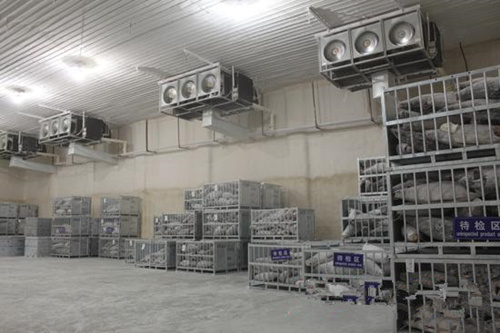Optimizing Cold Room Efficiency with Condensing Unit Solutions for Temperature Control
The Importance of Condensing Units in Cold Rooms
In the realm of refrigeration and temperature control, condensing units play a vital role, particularly within cold rooms that are essential for preserving perishable goods across various industries. Cold rooms, often used in food storage, pharmaceuticals, and laboratory settings, rely heavily on the efficiency and reliability of their accompanying condensing units to maintain optimal temperatures. This article delves into the significance of condensing units in cold rooms, their functionalities, and the advancements in technology that ensure their optimal performance.
What is a Condensing Unit?
A condensing unit is a pivotal component of a refrigeration system. Its primary function is to compress refrigerant gas, converting it into a liquid state, which is then circulated throughout the refrigeration system. The units typically consist of a compressor, a condenser, and a fan, all working in conjunction to facilitate the cooling process. This equipment is crucial for cold rooms, which require consistent, controlled environments to safeguard the quality and safety of stored products.
How Do Condensing Units Work in Cold Rooms?
The operation of a condensing unit in a cold room can be broken down into a few essential steps
1. Compression The compressor draws in low-pressure refrigerant gas and compresses it, raising its pressure and temperature.
3. Expansion This liquid refrigerant moves through an expansion valve, where it experiences a drop in pressure, causing it to cool significantly.
4. Evaporation The low-pressure liquid refrigerant then enters the evaporator coils within the cold room. Here, it absorbs heat from the surroundings, causing it to evaporate back into a gas, thereby cooling the air inside the cold room.
condensing unit cold room

5. Recycling The cycle then repeats as the gas returns to the compressor, maintaining a stable temperature in the cold room.
The Impact on Cold Storage Efficiency
The condensing unit's efficiency directly influences the overall performance of the cold room. An efficient condensing unit can significantly reduce energy consumption, lowering operational costs while ensuring that the required temperatures are maintained. It is crucial for food storage facilities and pharmaceutical companies, where proper temperature control is vital for product safety and efficacy.
Moreover, advancements in variable speed technology have allowed for more precise control over the refrigeration process. These modern condensing units can adjust their capacity based on the immediate cooling demand, resulting in even greater energy savings and efficiency.
Maintenance and Longevity
Regular maintenance of condensing units is key to ensuring their long-term functionality. Routine checks can prevent potential failures, which could lead to costly spoilage in cold storage facilities. Simple maintenance tasks include cleaning the condenser coils, checking refrigerant levels, and ensuring that the fan is functioning effectively. By prioritizing maintenance, operators can extend the lifespan of their condensing units, ensuring uninterrupted service for their cold rooms.
The Future of Condensing Units in Cold Rooms
As environmental concerns continue to shape the refrigeration industry, there is a growing emphasis on sustainable practices and the development of eco-friendly refrigerants. Innovations are underway to enhance the energy efficiency of condensing units further while reducing their carbon footprint. The integration of smart technology, IoT sensors, and automation is also poised to improve monitoring capabilities, allowing for real-time adjustments based on the cold room conditions.
Conclusion
Condensing units are indispensable in the operation of cold rooms, providing essential cooling for perishable goods and sensitive materials. With ongoing technological advancements and a focus on sustainability, these systems are becoming more efficient and reliable than ever. As industries continue to rely on cold storage solutions, investing in high-quality condensing units and maintaining them regularly will be paramount to ensuring product safety and operational efficiency in the future.
















































































































